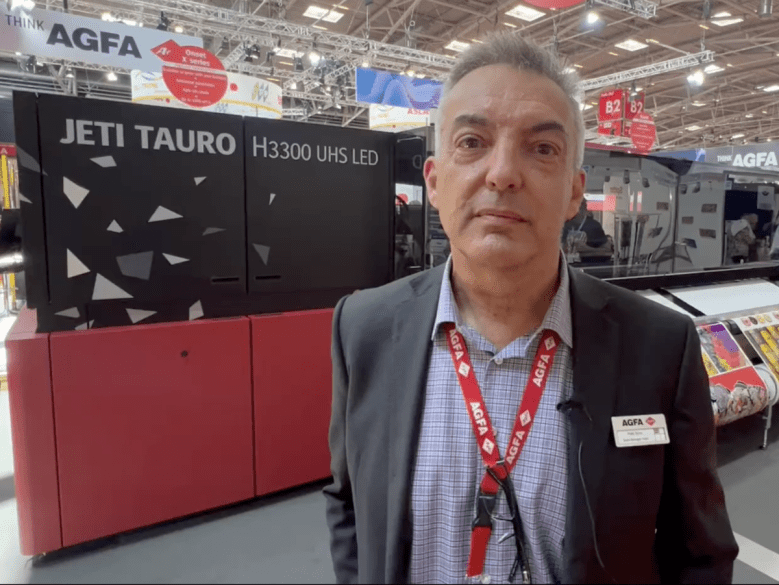
Agfa showcased a new roll-to-roll printing module on its fastest multi-pass wide-format inkjet printer family, the Tauro H3300 LED, at FESPA Munich last week.
The compact Flex RTR will allow for swift switching between rigid and flexible media, maintaining high productivity levels.
Print service providers can benefit from increased flexibility with the Flex RTR module, which doesn’t need undocking when transitioning from rolls to boards or sheets. This improves printer uptime and maximises print production efficiency. The module marks the next step in the Tauro’s automation story, focusing on the optimal utilisation of this hybrid printing solution’s versatility.
“Automation is at the core of our inkjet printing solutions development track,” Agfa segment manager for high-end inkjet systems Dieter Jancart said.
“Depending on a company’s specific job types and printing requirements, we will offer a tailored solution that will ensure the most efficient handling of their workload, regardless of whether it involves rigid or flexible substrates, or a combination of both.”
The Flex RTR was developed to match the one-pass printing mode on the Tauro H3300 UHS LED, up to a printing speed of 905 m²/h. It has a compact footprint and is ergonomic and user-friendly. With the press of a button, the dancer rolls controlling media tension move upward, enabling quick and effortless loading of the media by a single operator.
With the ability to handle both single- and dual-roll printing, the Flex RTR module can accommodate widths of up to 3.3m and 1.6m, respectively, with a maximum roll diameter of 400mm and a weight of 450kg for each roll.
Switching from single- to dual-roll printing and back is a quick and straightforward process that can be accomplished by a single operator. The dancer rolls do not need to be removed or reinstalled but can remain in place during the changeover.
To ensure accurate double-sided printing, the integrated camera system reads QR codes generated by the printer’s user interface to pinpoint the exact image location and adjust the print position at the start of each job. If printing on the back side is unexpectedly halted, the camera system will identify which image needs to be printed, so that production can resume rapidly and flawlessly.
Watch a video of Agfa Australia inkjet sales manager Phillip Burns talk about the technology on the last day of the show:
Comment below to have your say on this story.
If you have a news story or tip-off, get in touch at editorial@sprinter.com.au.
Sign up to the Sprinter newsletter
